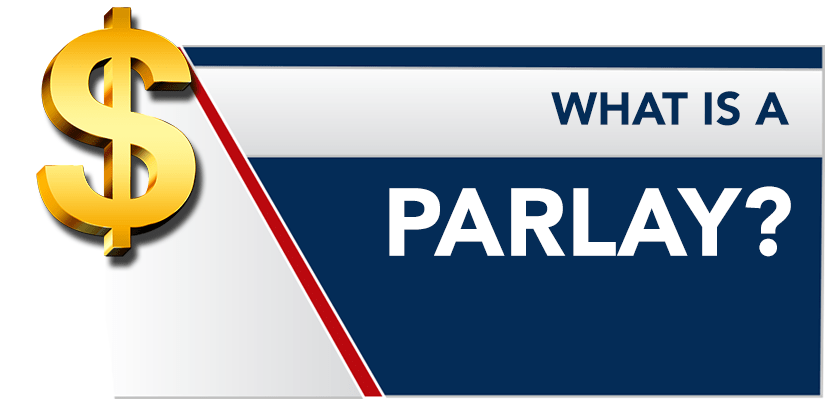A progressive parlay is a joint wager on multiple events, for example team sports or horse races. Generally a progressive parlay involves a joint wager on four to twelve separate events.[1] Should all the selected bets win, the bettor receives a relatively large payout, because of the sizable odds against this happening. However, unlike a regular parlay, if some of the individual bets lose, but most win, the bettor still wins, although with a much smaller payout. Several sites use a schedule where the bettor can lose one bet on a 4-6 event progressive parlay, can lose up to two bets on a 7-9 event progressive parlay, and up to three bets on a 10-12 event progressive parlay.[1][2][3][4]
The term has also been used for a long series of wagers on roulette or other gambling games, where the bettor attempts to rely on a 'stream of luck'.[5][6][7][8]
Strategies[edit]

Progressive Parlays. Understanding a progressive parlay requires an explanation of general wagering procedure. The simplest form of wagering is an individual bet in which a bettor picks the outcome of a single event (StatFox 2013, 2). A parlay bet is differentiated from an individual bet in that it involves the outcome of multiple separate. Top Reasons to Avoid Parlays. 1) Progressive betting systems are generally regarded as poor strategy for both bankroll management and bankroll growth. Professional bettors make wagers based on their quantified edge per game. Progressive Parlays can be between 4 and 12 teams, however, the bettor must choose only point spreads (no totals or moneylines). In this version of a parlay, bettors can lose games and still win the bet (as is reflected by the lower payout scales). When the progressive jackpot is active on this game from Parlay Entertainment, players can add an optional $1 side bet in hopes of being dealt a true Blackjack – Ace and Jack of Spades to win the pot. Aside from the optional progressive bet the game plays the same whether the jackpot is active or not. Give Progressive Parlays a try by adding the qualified wagers to your bet cart and selecting 'Progressive Parlay' from the dropdown menu. Progressive Parlays can be between 4 and 12 teams, however, the bettor must choose only football or basketball point spreads (no totals or money lines). In this version of a parlay, bettors can lose games.
Several strategies have been suggested by gambling consultants when wagering on parlays or progressive parlays, one of them being to pick interrelated outcomes. For example, a bettor may believe that one team is likely to win if the game is a low-scoring affair while the other team is almost certain to win if the game becomes a high scoring shootout. If the bettor uses a parlay to bet on the first team along with an under bet against the point total, he stands to gain 2.6 units ($260 if $100 is bet) on an original investment of 1 unit (the most common unit in betting is $100 although any amount can be substituted as a unit) compared to a payout of just 1.82 units ($182) if the bets are made independently of each other. Conversely, if both outcomes are missed, one will only lose his original 1 unit investment rather than the 2 units one would lose if it had wagered on the events individually. This minimized risk is another notable potential positive of a parlay. If a bettor wishes to bet on a significant number of events without putting a substantial amount of his total bankroll at stake, parlays may represent an attractive option. By turning 12 individual events into four 3 event parlays, the bettor reduces the number of units he is risking from 12 to 4 while simultaneously increasing his potential payout if all events are correctly picked.[9]
References[edit]
- ^ ab'Progressive Parlays'. SPORTSBETTING.NET site. Retrieved 27 January 2010.
- ^Stephenson, Vince. 'Progressive Parlay Bet'. SportsBet.com site. Retrieved 27 January 2010.
- ^'Progressive Parlays'. Belmont.com site. Retrieved 27 January 2010.
- ^'Progressive Parlays'. Predict Em site. Retrieved 27 January 2010.
- ^'Education: Applied Mathematics'. Time. December 1, 1947. Retrieved 27 January 2010.
It was a 'progressive parlay' based on mathematical probability, some intricate slide-rule calculations, and two assumptions: that any roulette wheel follows a pattern of its own, and that good or bad luck runs in streams.
- ^'Math Student Finds $300 Plus Reno is $13,000: U. of C. Graduate and Pal 'Take' Town at Roulette'. Chicago Daily Tribune. November 20, 1947. p. 22. Retrieved 27 January 2010.
- ^Moe, Al W. (October 2008). The Roots of Reno. BookSurge Publishing. p. 177. ISBN978-1-4392-1199-1. Retrieved 26 January 2010.
- ^Baer, Robert M. (1972). The Digital Villain. Addison-Wesley. p. 65. ISBN0-201-00442-9. OCLC297591.
- ^'A Look at Progressive Parlays and Picket Pools'. SB Pal. Retrieved 17 September 2013.

What are Progressive Parlays Regarding Sports Betting? Definition and Meaning
by Doc's Sports - 10/10/2014
A progressive parlay operates much like a standard pointspread parlay, but with a twist - they are harder to lose. In a progressive parlay bettors choose between four and 12 teams. Like a standard parlay, bettors win and get a sizable return if they select all of the games correctly. Where these bets differ is that bettors also get a payout - albeit a much smaller one - if only most of their picks are correct. Typically, in 4-, 5- or 6-team progressive parlays you get paid with one wrong, while you can make two mistakes in 7-,8- or 9-team parlays and three with 10, 11 or 12 teams.
Progressive Parlay Cards
It sound too good to be true, doesn’t it? There has to be a catch. Well, of course there is. You pay for the extra security of this bet in the lower payouts. Let’s look at a 10-team parlay, for example. Betting just a straight parlay, the potential payout would typically be 700/1. With a progressive parlay the payout for all of the picks being correct is just 250/1. With nine out of 10 games correct the payout is slashed to 25/1. It would be 3/1 for eight of 10, and even money for seven of 10.

The problem with pointspread parlays of any kind is that they are not mathematically sound for most bettors. The average square bettor doesn’t have better than a 50 percent chance of being on the right side of a given bet - not over the long term. At 50 percent, the true odds for hitting a 10-team parlay are 1,023/1. The bet only pays 700/1 - or potentially less depending on the book. Betting when the odds are so dramatically less than the potential reward is a fast way to go broke.
The true odds paint an even worse story for progressive parlays. With a progressive parlay the probability of hitting all 10 games is still 1,023/1, but the payout falls all the way to 250/1 - a horrible bet. Your chances of hitting nine of 10 are about 102/1, but the payout is 25/1 - another horrible bet. Your chances of hitting eight of 10 are worse than 11/1, but the payout is just 3/1. Lousy. Your odds of hitting seven are about 1.4/1, but the payout is just even money. Yet again, a lousy bet. So, there are four different ways to get paid in a 10-game progressive parlay, and each one pays well below the true odds. The numbers would be different depending upon the number of teams involved but the overall story would be the same. In almost every case, then, the progressive parlay is a sucker bet.
Progressive Parlay Betting
Doc's Sports is offering $60 worth of handicapper picks absolutely free - no obligation, no sales people - you don't even have to enter credit card information. You can use this $60 credit any way you please for any handicapper and any sport on Doc's Sports Advisory Board list of expert sports handicappers. Click here for more details and take advantage of this free $60 picks credit today .